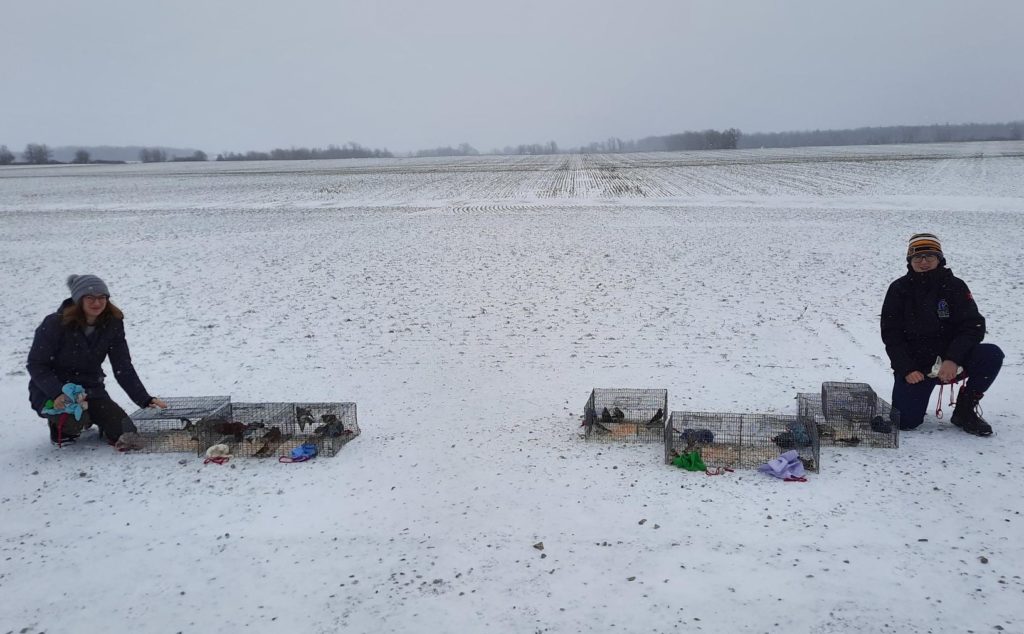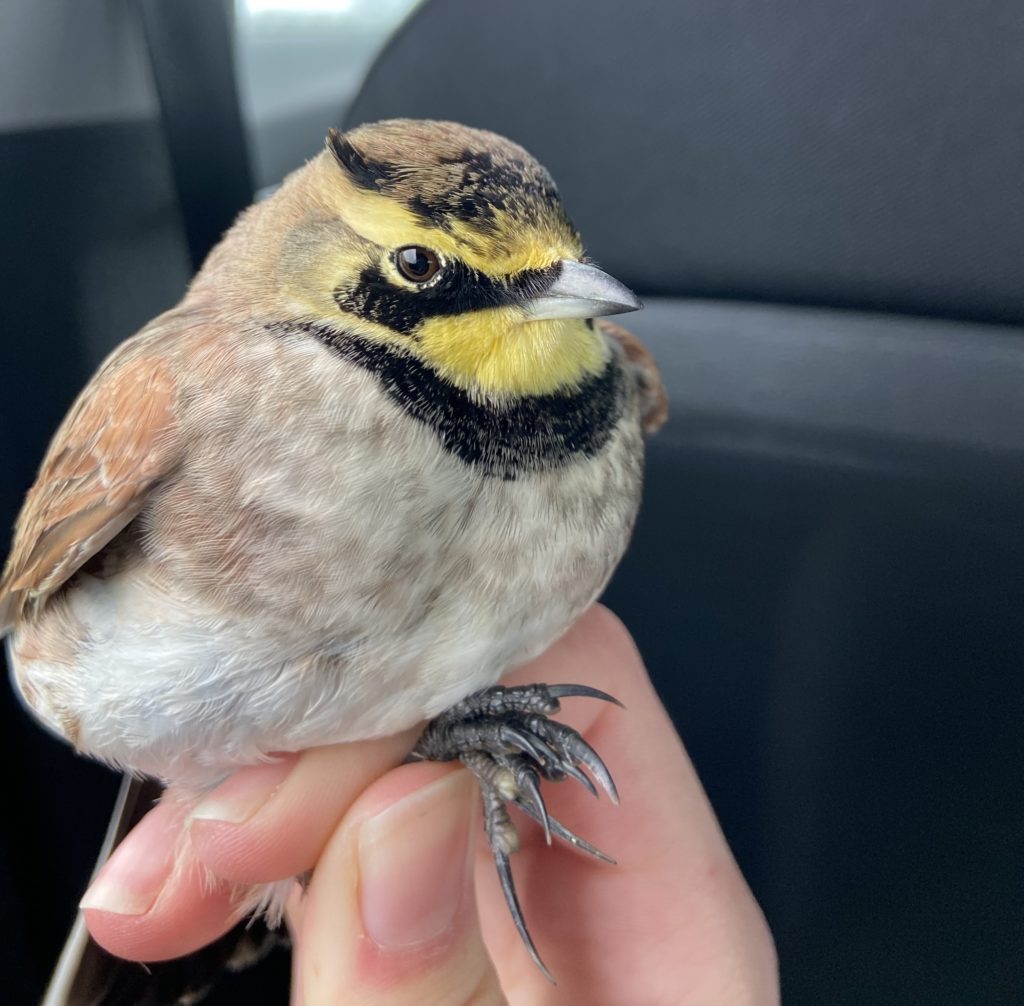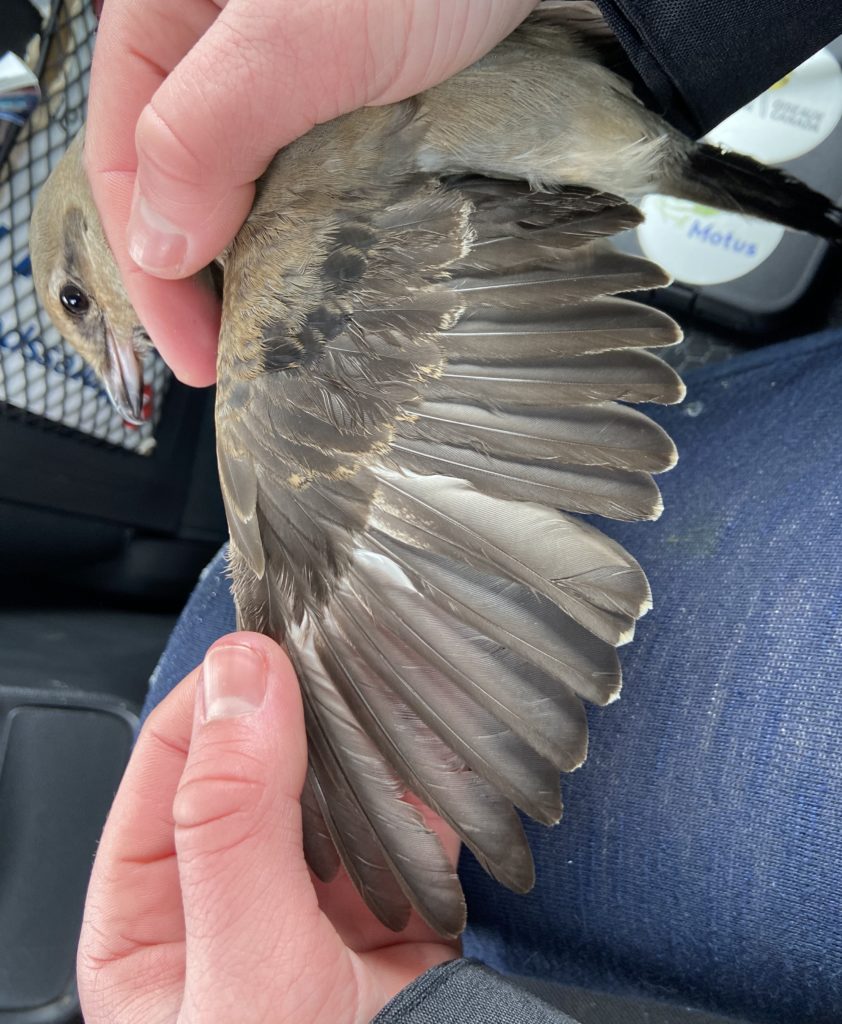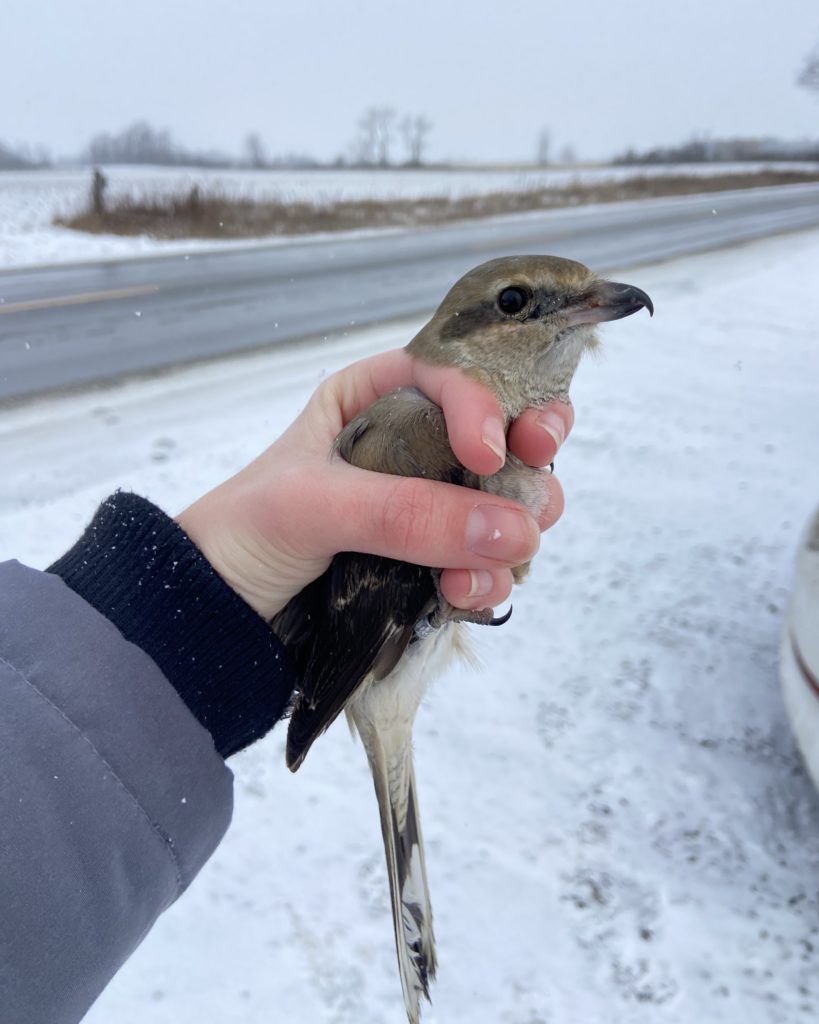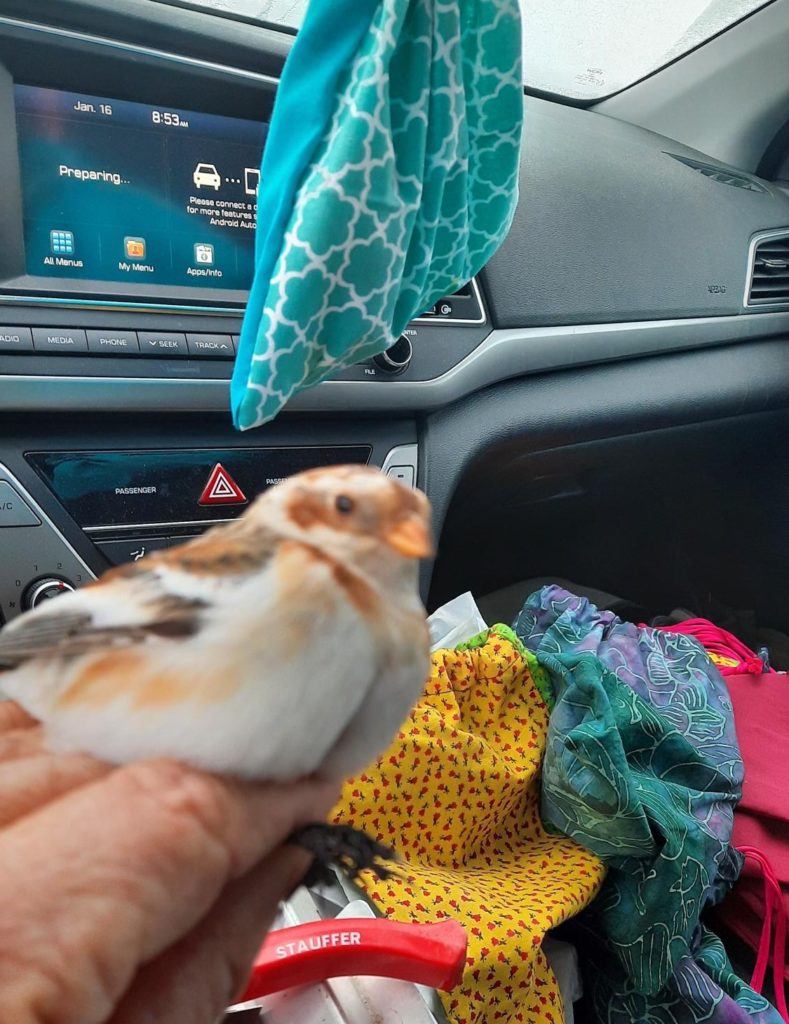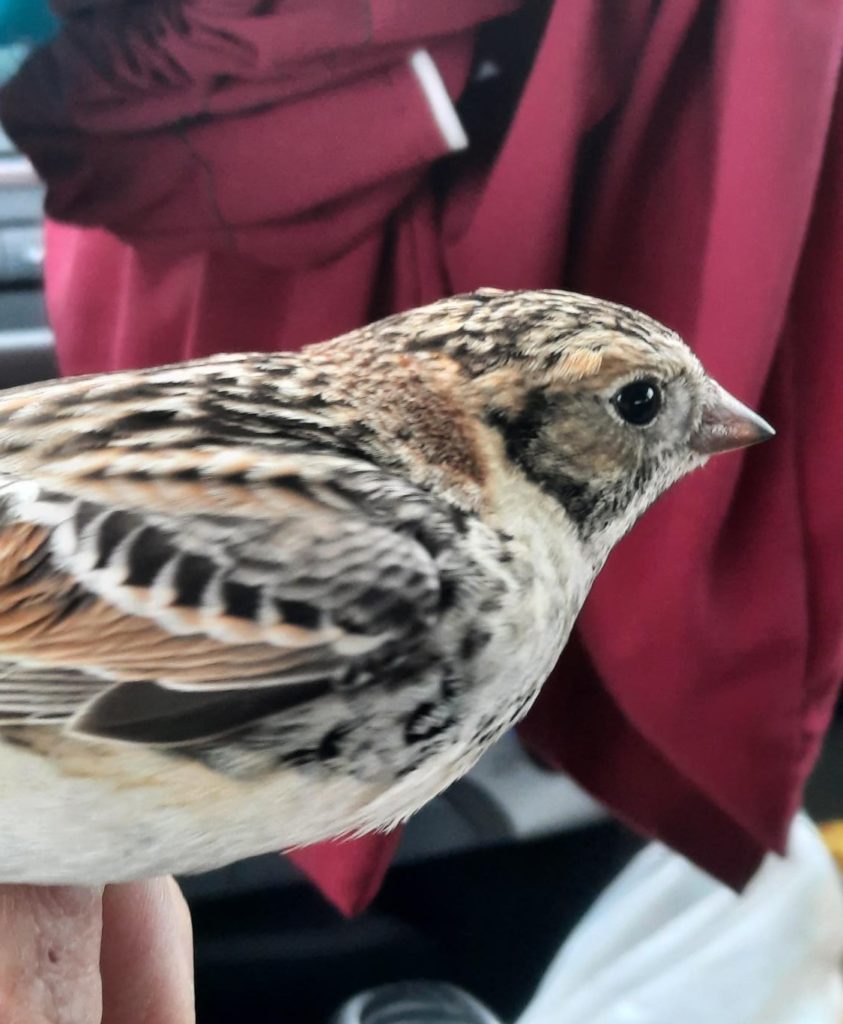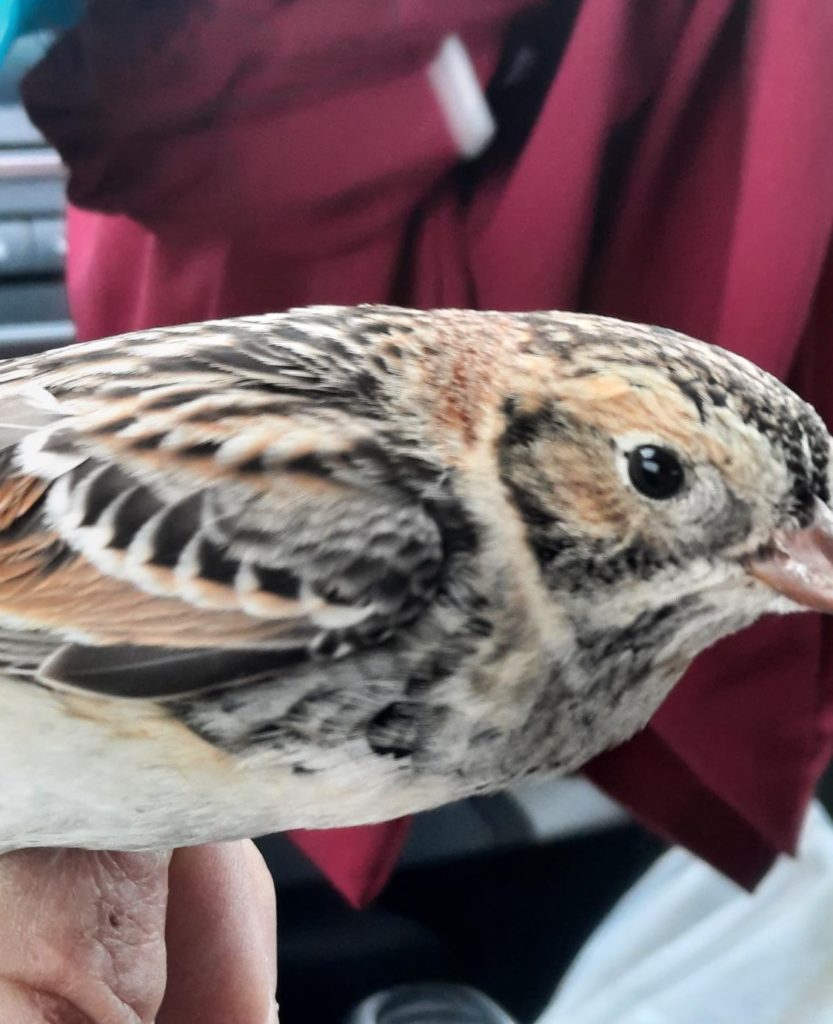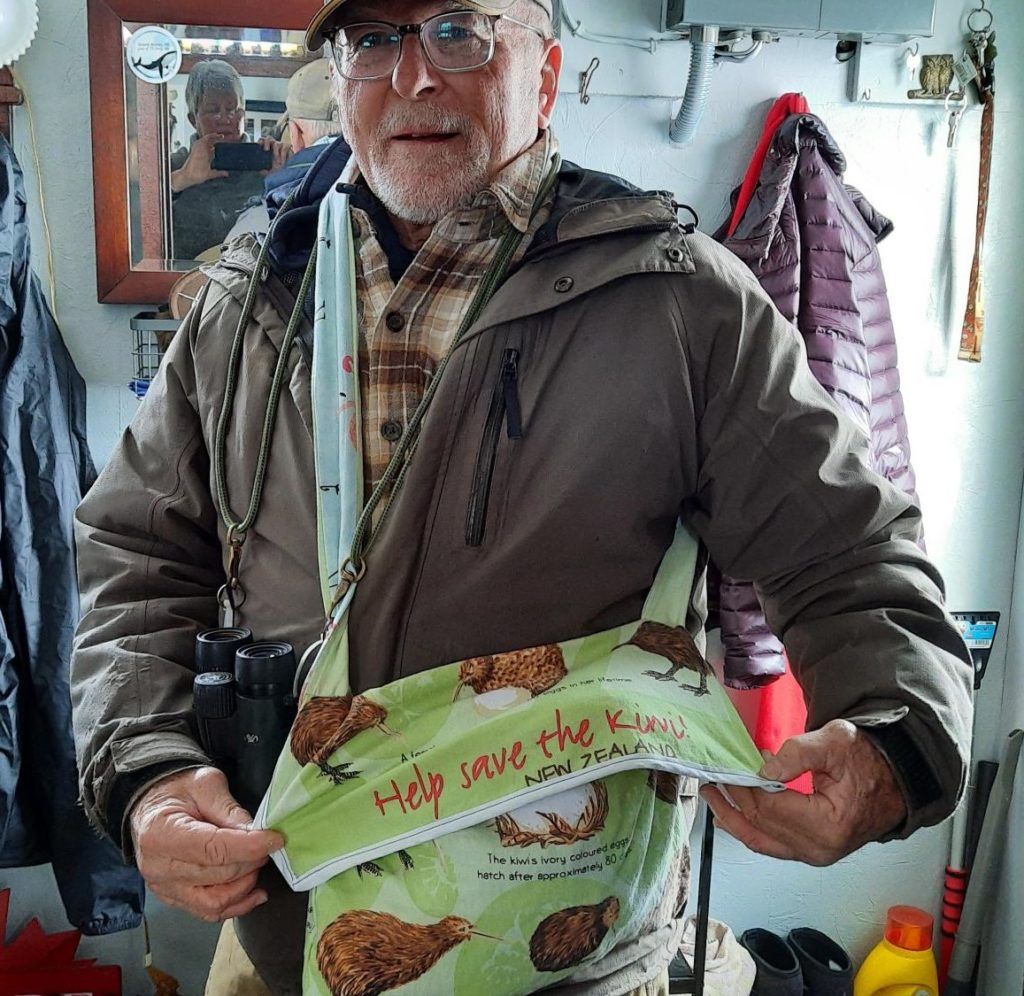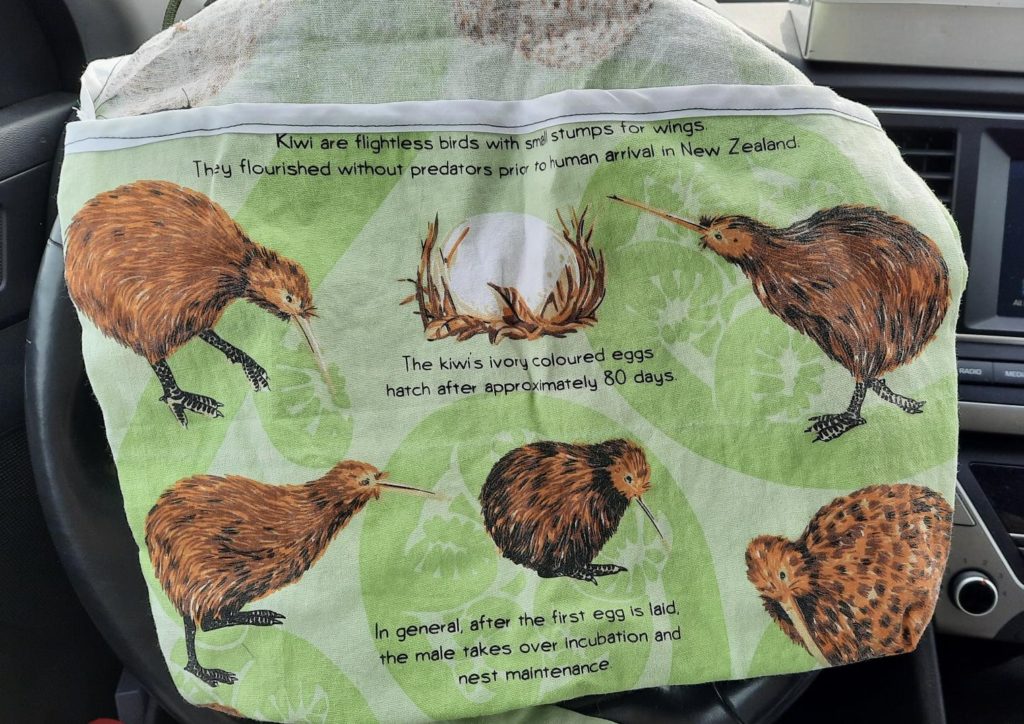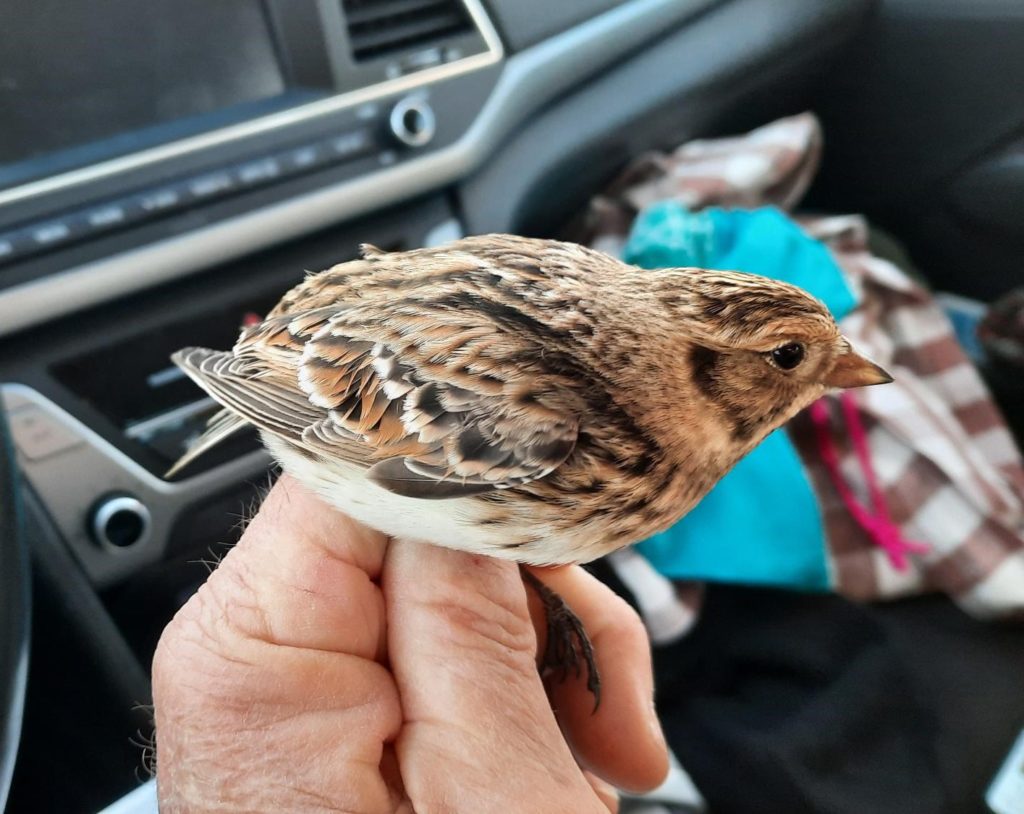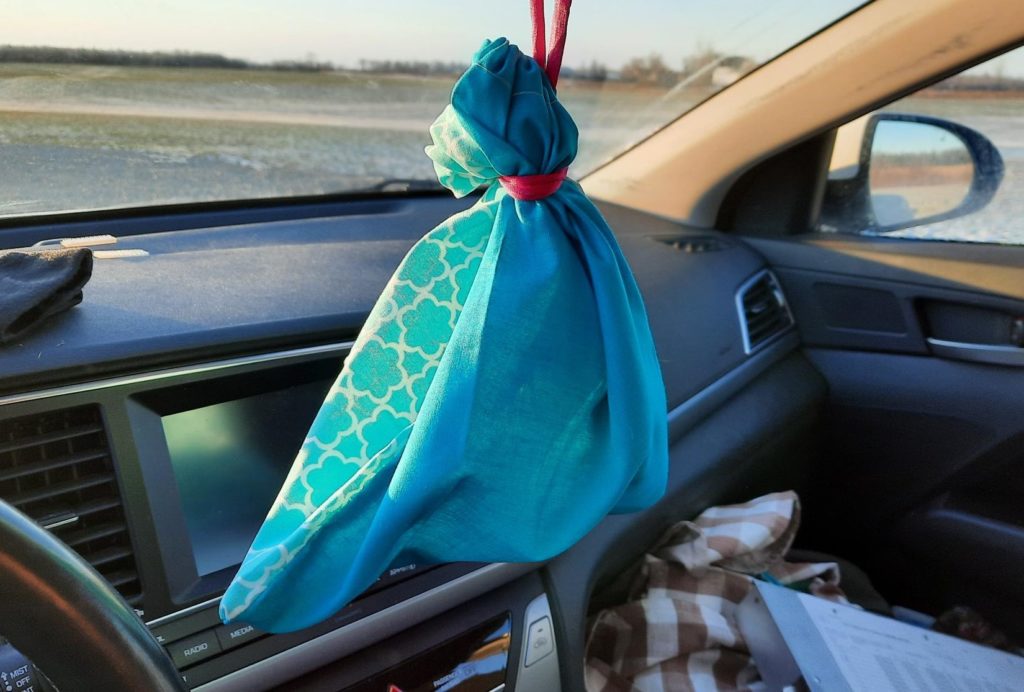We had a big day this morning. I had been expecting it as yesterday, when I touched up the bait piles early at 7:30, there was a mixed flock of around 300 Horned Larks, Snow Buntings, and Lapland Longspurs waiting for me. They had finished yesterdays offerings and were patiently waiting for more. They descended on the cut corn as soon as I turned to go back to the car. But….I wasn’t able to band due to appointments in the city. Late in the afternoon, upon my return, the morning corn was gone so I put out more. But the cold has been making these birds ravenous.
It was the same this morning – a large flock waiting to be fed. Only this time I was able to stick around and set out traps. Thankfully I was joined by Sarah and Liam. They did all the banding while I scribed. They also did most of the trap extractions which made things much easier on my knees. We had a bumper day, banding a total of 125 birds: 35 Horned Larks, 74 Snow buntings, 15 Lapland Longspurs….and 1 Northern Shrike. This gives us a total of 78 Snow Buntings, which is more than we banded in all of last year’s disastrous mild, 75-bunting season.
For most of the morning there were at least 200 birds hanging around. Whenever we went out to clear the traps they would fly up and land about 100 m. back in the winter wheat field. But as soon as we returned to the car they were right back to the corn. That is until a juvenile Northern Shrike showed up. It flew in surreptitiously and we weren’t aware of it’s presence until we noticed the panic in the traps. When Liam sprang from the car the shrike was outside the trap but by the time he quickly covered the 20 m. to the traps it was inside and managed to kill one bunting before he could grab it. It was amazing how quickly the bird solved the puzzle of how to get into the trap – if only buntings were as fast. The shrike put a damper on feeding, so after half an hour without many birds even in the area, we called it a day. But it was a good one!
We had an interesting “return” today: a Horned Lark that had been originally been banded here January 30th, 2023 – almost exactly a year ago. I wonder if it played a role in bringing birds to the site…..
Photos:
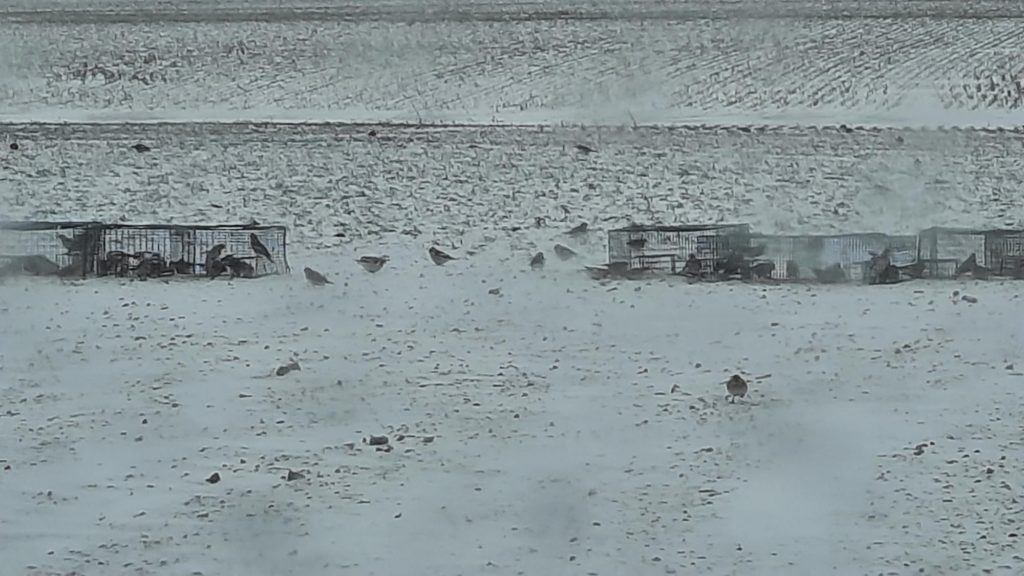
This shot of birds in the traps gives you a good idea of how desolate the site is – and yet thebirds have found it in large numbers. -DOL
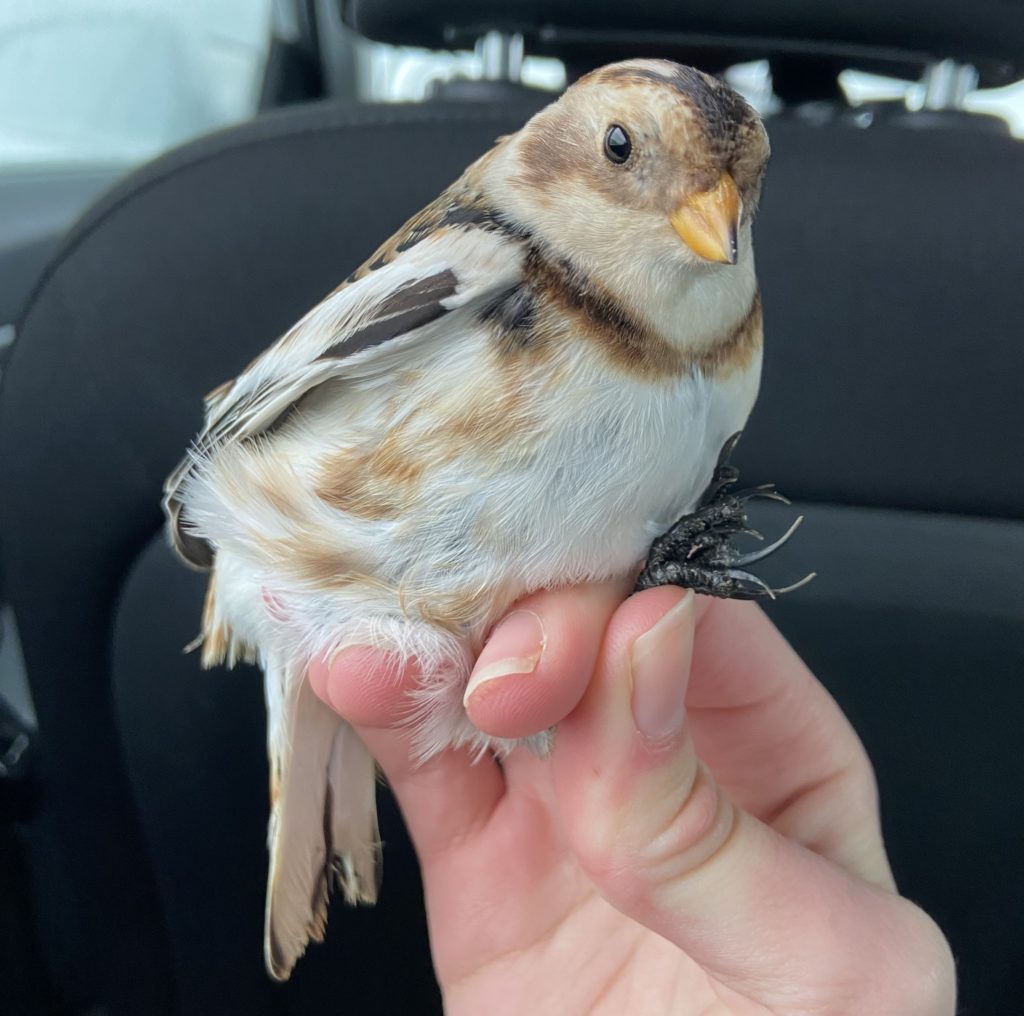
Male Snow Bunting. Females outnumbered males 3:1 today – the usual split at this southern site. -SGS
Rick

